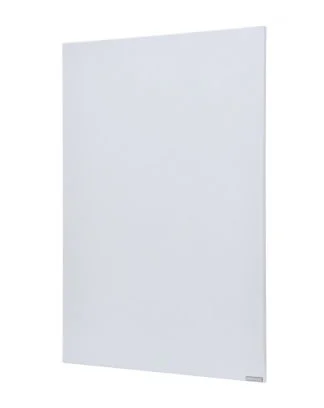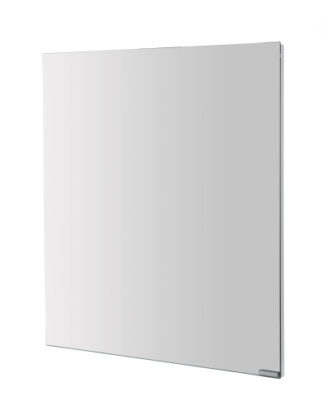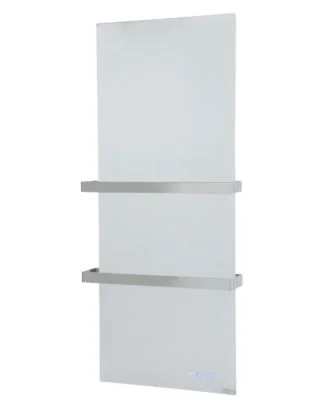We get asked a lot why is our infrared heating so efficient so in this week’s blog we thought we would have a crack at answering exactly that question.
Many of the reasons infrared heating is so efficient come from the fact it is radiant heating compared to convection heating.
Radiant heating versus Convection heating
So what is the difference between these two forms of heating? Per degree centigrade output, Infrared has a higher rate of heat transfer than convection heating. Infrared (which is radiant heating) also primarily heats solid objects directly rather than convection heating which heats the air: so you are concerned primarily with heating surface area as opposed to the entire volume of air. You can also “zone” or target infrared to heat just one area in a room, which is impossible with heaters that primarily heat air, which have to heat the whole volume in a space. Infrared is also easier to control.
Infrared therefore requires a lower installation wattage and runs less than convection-based heaters. As a rule of thumb, we normally recommend a 600w infrared heater as equivalent to a 1.5kW convection heater. Obviously this is therefore far cheaper to run if you compare infrared panel heaters with equivalent electric convection panel heaters.
This video explains things well:
Bearing in mind the price of gas is 4p / kWh and electricity is 13p / kWh, comparing infrared with gas powered convection heating (i.e. a wet central heating system with radiators), the numbers are far more even. You can read more about how Infrared stacks up against convection heating by clicking here.
Another key benefit of radiant heating (i.e. the heat produced from our infrared heating range) is that since you are heating solid objects, when you turn off the heat source, it takes far longer for the room to cool down. Imagine the infrared heater is opposite a wall – the wall will absorb the infrared and warm up. This wall, especially if it is well insulated will then slowly release this heat back into the room. If you have a radiator trying to heat the equivalent space, the room will certainly warm up – but the reason an occupant would feel warm upon entering that room is the air is warm. If the door to the room is opened for example, the warm air will quickly escape and the room will feel cold again – requiring the heating to be turned on again.
As a result, less energy is required to top up the heating if you are using infrared heating – which obviously means lower energy bills.
Another benefit of infrared heating is that the thermostat can be set far lower (compared to a room heated by convection) because the walls and objects in a room get warm (including you if you are standing in front of it!). In some cases you can set the room as much as 3 degrees lower but still feel no real difference in warmth. This means the infrared heater can switch off much quicker allowing you again to benefit from lower bills.
Popular Infrared panel heaters
-

Herschel Select XLS – White Frameless Infrared Panel Heater
FROMRRP: £238.00
Our Price: £228.00Select options -

Herschel Select XLS – Mirror Infrared Heater
FROMRRP: £378.00
Our Price: £368.00Select options -

Herschel Select XLS – Infrared Towel Heater with Integrated Controls – White
FROMRRP: £449.00
Our Price: £444.00Select options
New infrared heaters versus older infrared heaters
So the reasons above all compared radiant heating directly with convection heating, but there is another reason our selection of infrared heating systems are so efficient. Where as the old style infrared heaters relied on thick solid bars of resistance metal to get very hot (they glowed orange) to emit infrared, our new style heaters have far thinner wires densely distributed over the whole of the area of the panel, which means they can operate at far lower density than the old style infrared heaters.
So there you have it – just a few of the reasons why infrared radiant heating is so good! All our Herschel infrared heaters come with a minimum 5 year warranty (our Inspire range carry a 10 year warranty) so you can be sure when you buy through Infrared4Homes you are buying the best quality infrared heating solutions out there.

I am looking for a heated mirror for my bathroom. Does it matter that it won’t be controlled on a thermostat?
Is underfloor heating a type of radiant heating? Looking online I am getting mixed messages.
I am interested in getting infrared heaters and I am interested in mounting them on the ceiling. I have read that you suggest between 65w and 100w per m2 based on a 2.4m high ceiling. Our ceiling is 2.9m tall, so wondering what impact this will have on the required infrared heating wattage?
We have big gaps at the top of our sash windows and so when we turn the radiators off in the winter the hot air quickly leaks out! Unfortunately the windows have been painted shut so we can’t move them up or down anymore so these gaps are going to exist for ever. Obviously I have tried to fill the gaps in the windows with bubble wrap, but thus far this has not proved successful. Would infrared negate the need to fill the gaps?
From energy.gov – the USA website
Radiant panels have the quickest response time of any heating technology and — because the panels can be individually controlled for each room—the quick response feature can result in cost and energy savings compared with other systems when rooms are infrequently occupied. When entering a room, the occupant can increase the temperature setting and be comfortable within minutes. As with any heating system, set the thermostat to a minimum temperature that will prevent pipes from freezing.
Always had electric heating in my house. Maintenance free and can also switch on heaters when using the rooms.
Not sure why infrared is more efficienct that other electric heating? One unit of electricity costs 12 pence, so what difference does it make if that is convection of infrared? Surely a 1000w infrared heater running for an hour will cost £0.12 as would a 1000w convection heater?
I am very interested in getting new electric heaters to replace some dimplex heaters we have in our lounge and bedrooms at home. They are the FXL 18/24 N dimplex heaters. What equivalent infrared heater would I get. There are 3 in total.
Infrared heating really works. We had to replace old storage heaters in our home and so we bought six panels ( various different sizes) to heat the whole house. They infrared heaters are fantastic. Provide a nice level of warmth and seem more efficient in that our electric bill is that much lower.
We have infrared in our lounge and we love it!
What is the biggest infrared heater you do?
Our infrared heaters are terrific. We were on Economy 7 with storage heaters when we moved into our new home, however there were several problems with them. First, they never stayed hot until the next evening, so we had to use the dreaded boost button (I actually bought an energy monitor to see how much these babies used when you charged them during the peak rate. It cost us £2 / hour when the 4 storage heaters were on. Couldn’t believe it. Secondly it was very difficult to control the heat. They weren’t really thermostatically operated., they just threw out heat. Lastly they looked terrible! When I started looking for alternatives we looked at Fischer heaters and got a quote for them, Herschel infrared heaters (recommended by a friend) and Haverland electric radiators. They all have pluses and minuses, but the Herschel infrared heaters were mid tier in terms of price and they looked more stylish than the other heaters. We bought 4 units in all and touch wood we have been very happy with them, the infrared keeps you nicely warm without being overpowering.
Is underfloor heating radiant heating? I am confused.
These Infrared heaters work very well. We had the choice between electric radiators and infrared heaters but these are more stylish in our home. The thinner profile means they take up very little space and the room warms up very quickly when the infrared heaters are switched on. My advice would be to give them a try!
Excuse my ignorance but this article sucks. Nice PR though. It’s a clone of quite a few around the UK web. The main points with infrared panels not mentioned or debated anywhere:
– as this is an electronic device yet no manufacturer bothered getting an energy sticker on the product (it’s the end of 2016) Nobody cares about efficiency of this electrical device? You won’t be in the EU much longer so you probably don’t need to care anyway.
– what makes the panel emit infra rays is the high temperature mainly, the higher the better. Composition of the panel material isn’t that important. Conventional radiators, burning stove etc. emit infrared too, one from hot water the other from burning fuel/flame.
– Glass and polished surfaces of the panels affect emissivity – result? Less radiant heat and more convection
– the panels produce over 90% of radiant heat? Dream on people… When vertically mounted, they can achieve about 50% radiant heat and 50% is convection. Check the temperature above and behind the panel for yourself. Or explain how come that it is warm in the shadow of the panel reach? Black magic?
– you keep talking about having insulation in the house before it makes sense to go infrared – why are you not specific? U-values, air leakage…
– walls get warm with any type of heating, even convection as the air circulates and gives off heat to colder surfaces it flows by
– how did you guys came up with the 600W radiant heat vs 1500W convection heat formula? Prepare to hear your teeth chatter from cold quite often if you go by this. A lie said million times becomes the truth. Do you have the same saying in English?
– 5 year warranty is a minimum, made in EU, Forget about Chinese products for now
– the best note in this type of articles is a suggestion that conventional radiator (gas boiler water heating) can’t be regulated in rooms. I am sure you have heard about TRVs, haven’t you? For the last 20 years there are some that act like a thermostat that can be time programmed, so you don’t have to just turn the radiator on and off but can have it on in certain times during the day without actually stretching your lower back muscles to bend down to the TRV (assuming you gas boiler is set to on as well).
– anyone experienced hot head, warm shoulders and cold feet with infrared heating? How does it feel?
– imagine, you are watching TV, you have panels in the ceiling above or on the wall. How soon will you realise the thermostat in the room switched the heating off? 60 seconds or so?
– orange glow? I don’t think it ever affected electric infrared panels. This is a case of gas fired infrared heaters used externally – e.g.. outside a pub
– infrared heating is also ends up heating the air – all heated objects actually become radiators that heat the air.
– You are missing out on quite a few other benefits of heating with infrared, if you could just read online articles in German… Why this article doesn’t mention health benefit for allergy and asthma sufferers? No airborne dust? How come this got forgotten? It’s not money and money only!
– what is the thermal mass in a dry-lined property? The half an inch thick plasterboard? Good luck in convincing the insulation behind the plasterboards to send some of the accumulated heat back to the room. But if you ask it nicely it might.
Don’t get me wrong I am also looking to go infrared, but articles like this are waste of everyones time, to put it nicely… Don’t just faff around your greatest infrared panels. Internet is full of this shite, excuse my language. Do your job and test, compare and publish meaningful results, especially if you are a re-seller or manufacturer.
Radiant heating is excellent – it is nearly silent, it’s clean, it’s comfortable, there are no ducts to clean, it’s efficient and requires minimal maintenance.
The other major benefit is the ability to zone your house. With a small amount of effort and some additional expense, you can have groups of rooms on their own zone. This allows you to have different zones at different temperatures at different times. If you only use a few rooms in your home, you just can heat those rooms in that zone.
Infrared heating is definitely the way forward. I have also heard that storage heaters are going to be banned soon in rented properties in Germany and I imagine the UK will follow suit pretty quickly, therefore installing infrared heaters in your home should be a way to future proof yourself too.
The only downside is that they are not cheap to buy, but if you are replacing your heating system then these are definitely the way to go.
Installed infrared heaters in our new flat and we are thrilled. Would recommend them to anyone!
We ordered 2 select infrared heaters and they shipped to us here in Belfast. Very happy with them
Hi Gus, glad you are happy with them, appreciate you getting in touch!
We installed convection heating as a means to replace the old storage heaters we had at home. They seem to work very well, and it is quite right they do save on electricity bill. We reckon we have knocked about £400 off by installing these and moving to another installer.
Hi greencastle, we are interested in moving to infrared. How do you control them? I have seen that most of them just come with a UK plug? Do you have plugin thermostats or do you use wired in thermostats. Also does a conventional thermostat work with them? Your thoughts would be hugely appreciated